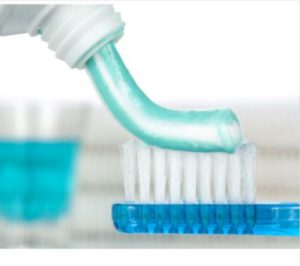Fun Facts with Fluoride
Posted in Oral Health | December 30, 2016Fun Facts with Fluoride
In pretty much any dental hygiene product you’ll find some fluoride. You’ll find it in toothpaste, mouthwashes, even in the material used to fill baby teeth. You’ll even find it in the municipal water supply in Mt. Pleasant.
Occasionally you’ll hear some nut job spouting off about how fluoride is a communist conspiracy to brainwash the population, and they push to have it removed from local water supplies. But those people need to be careful what they wish for — fluoride’s probably keeping those last few teeth in their mouths.
You’ve probably heard of fluoride, but may not know how it goes about its superhero job of strengthening our teeth. Here’s some info on this ubiquitous dental mineral.
What is fluoride and how does it protect the teeth?
Every day your mouth is kind of like the ore boats making their way to and fro on Lake Superior; it has minerals coming and going. Minerals are added to and lost from a tooth’s enamel layer through two processes, demineralization and remineralization. Remineralization is good; demineralization is the problem. Minerals are lost from a tooth’s enamel layer when acids, formed from the bacteria in plaque and sugars in the mouth, attack the enamel. Fortunately, when you eat foods and drink water, minerals such as fluoride, calcium, and phosphate remineralize the teeth. Therein lies the ongoing battle — too much demineralization without remineralization results in tooth decay.
Conspiracy theorists aside, fluoride is a mineral that occurs naturally in many foods and water. It helps prevent tooth decay by making the tooth enamel more resistant to those acids from bacteria and sugars in the mouth. Fluoride also has the cool effect of reversing early cases of decay. For kids under 6, fluoride becomes incorporated into the development of permanent teeth. This makes the teeth resistant to the assault of acids to demineralize the teeth. Fluoride also speeds remineralization and disrupts acid production in the mouth. What’s not to love?
When is fluoride the most beneficial?
Since it was first tested and shown to have such tooth-strengthening powers, originally it was thought that only children benefit from fluoride. But new research shows that topical fluoride from toothpastes, mouth rinses, and fluoride treatments are important to help adult teeth fight decay. For children, it’s long been known that children between 6 months and 16 years need fluoride to help build their teeth.
Fluoride treatments with Dr. Egger
Now you know that fluoride is one of your mouth’s best friends. We provide fluoride treatments at Dr. Egger’s to give our patients a more concentrated occasional fluoride application. We apply fluoride varnish topically at each appointment of our younger patients. Call us at 989-773-3560 to schedule your next appointment.

